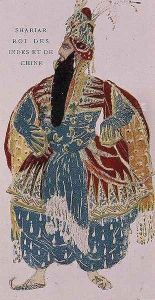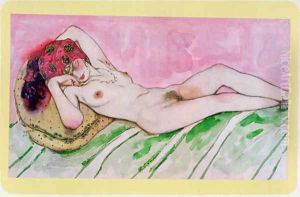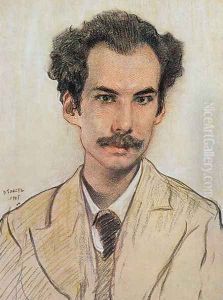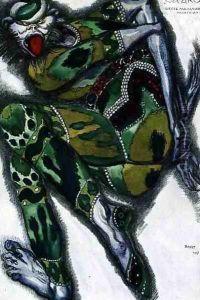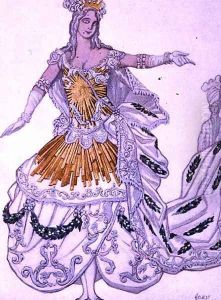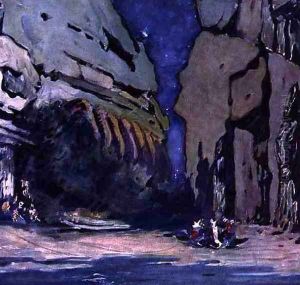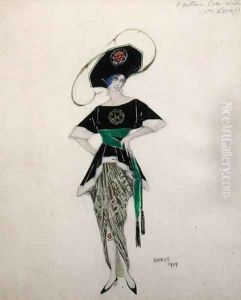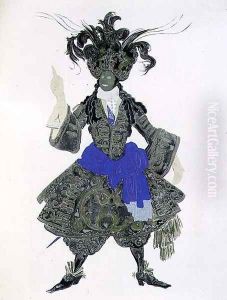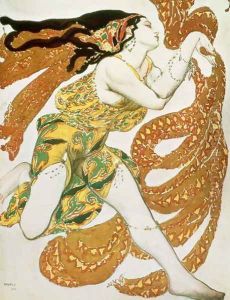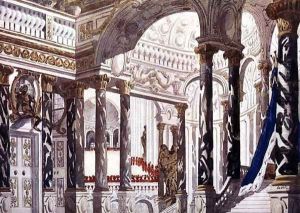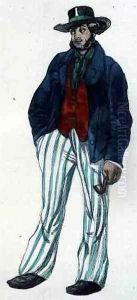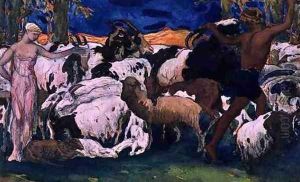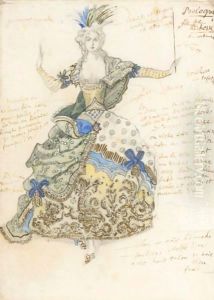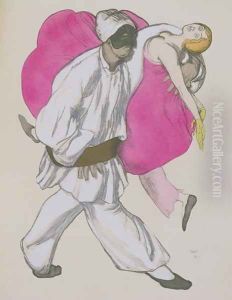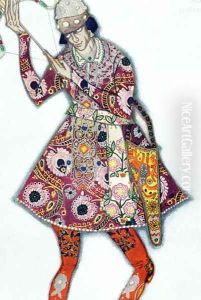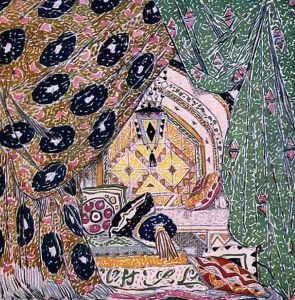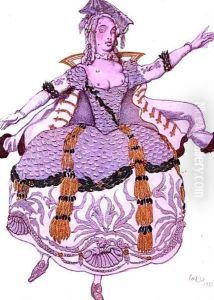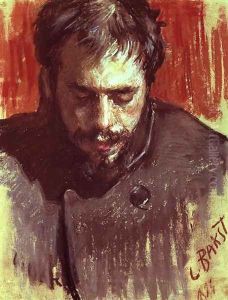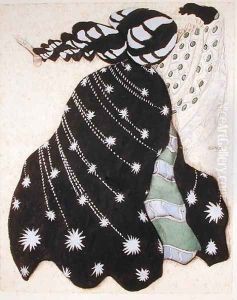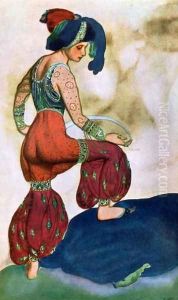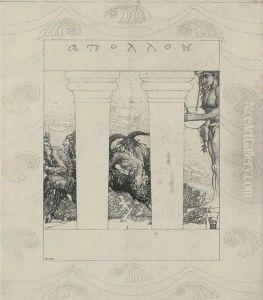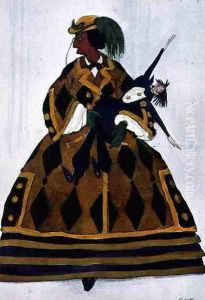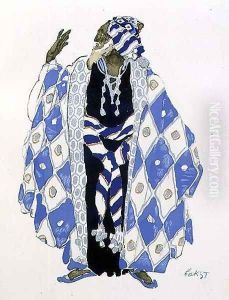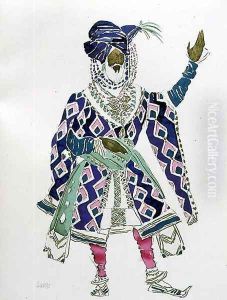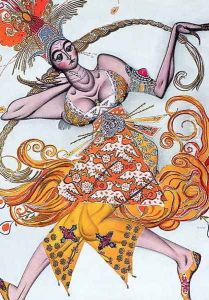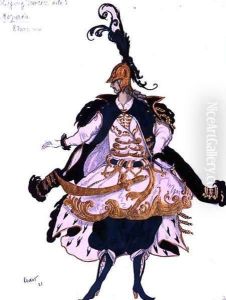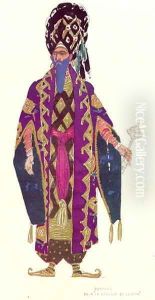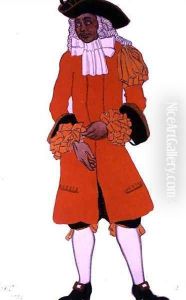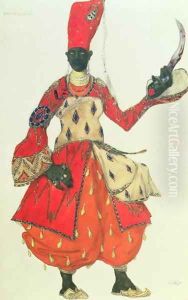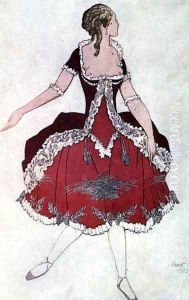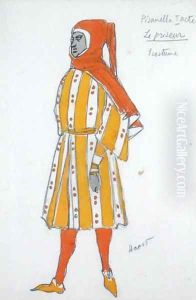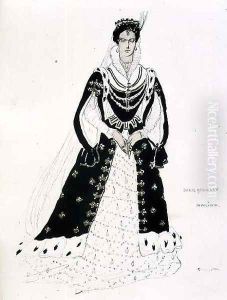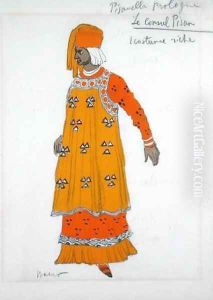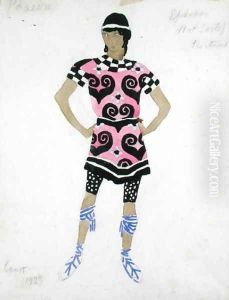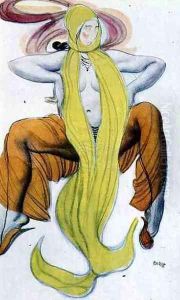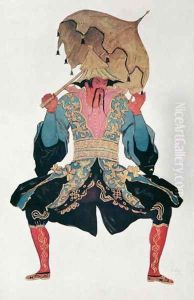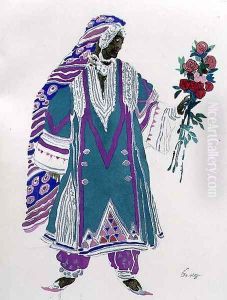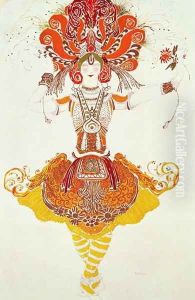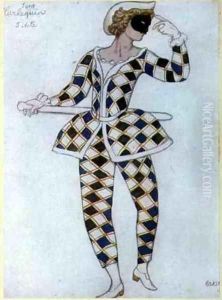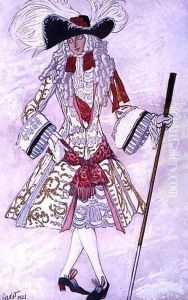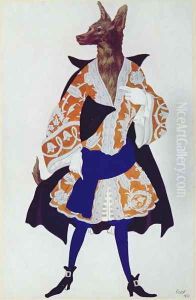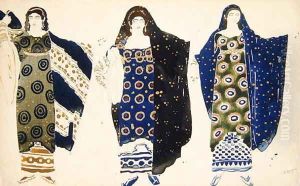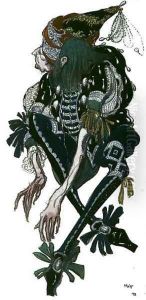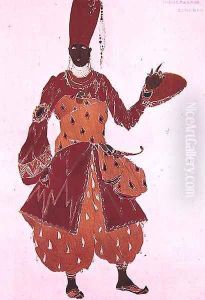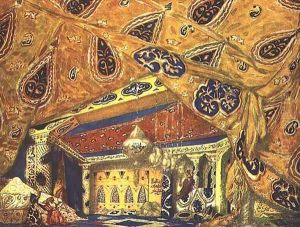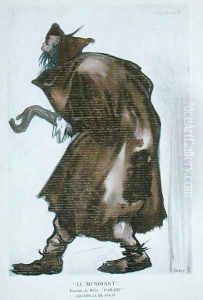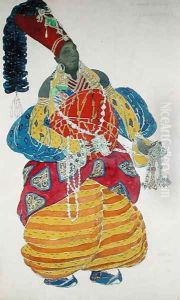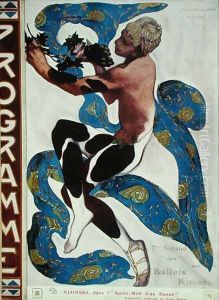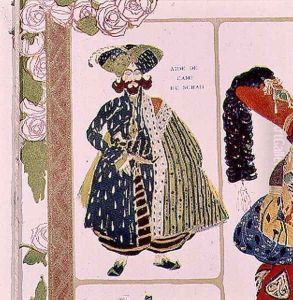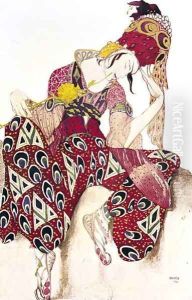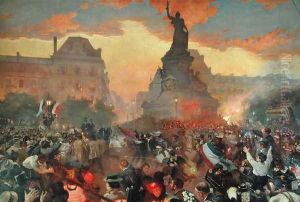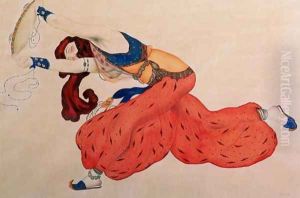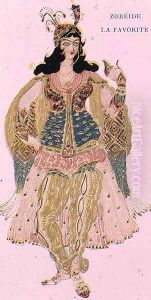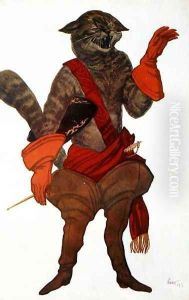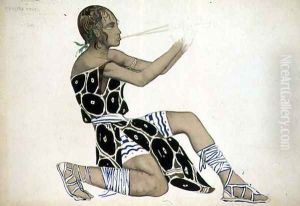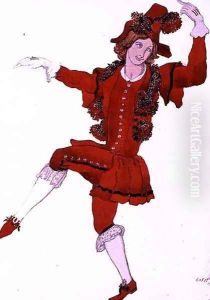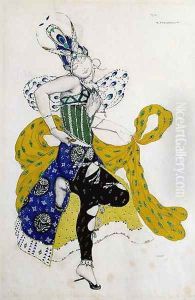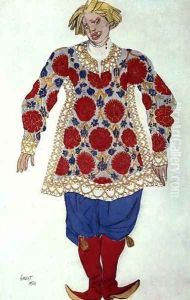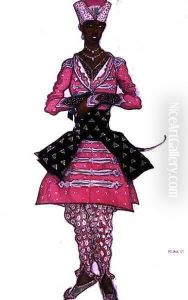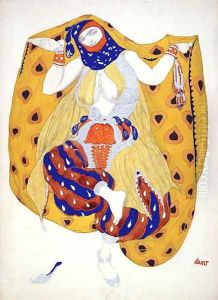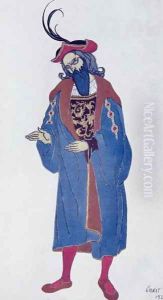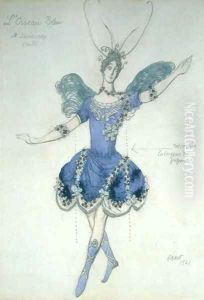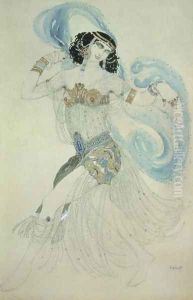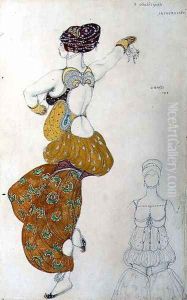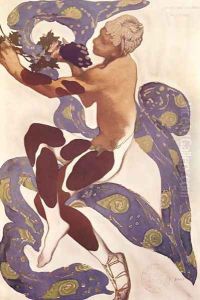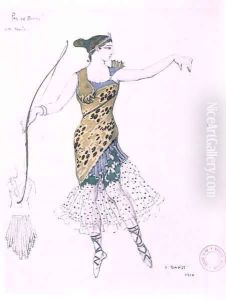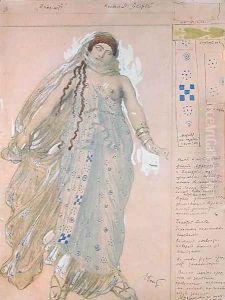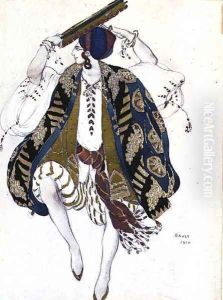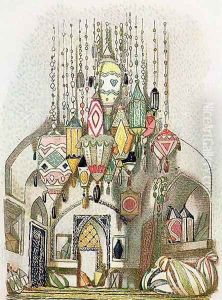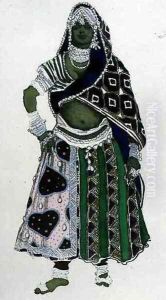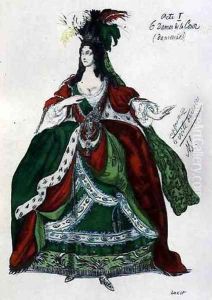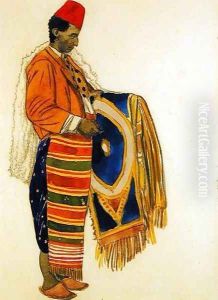Leon Samoilovitch Bakst Paintings
Leon Samoilovitch Bakst, more commonly known as Léon Bakst, was a Russian painter, scene and costume designer. Born as Lev Samoilovich Rosenberg in Grodno (then part of the Russian Empire, now Belarus) on May 10, 1866, he was a prominent member of the Russian artistic movement known as the Mir iskusstva (World of Art). Bakst changed his surname as he wanted to dissociate himself from his Jewish heritage and create an identity that was more acceptable in the Tsarist Russian society.
Bakst's early education was at the Academy of Fine Arts in St. Petersburg where he studied under the guidance of famous Russian artists such as Ilya Repin. Despite showing early promise in painting and illustration, Bakst became more widely known for his work with the Ballets Russes, a renowned ballet company led by impresario Sergei Diaghilev. His association with the Ballets Russes began in 1909, and he quickly gained fame for his exotic and vibrant costume and stage designs, which played a significant role in the company's international success.
His work for the Ballets Russes, particularly the designs for productions such as 'Cleopatra' (1909), 'Scheherazade' (1910), and 'The Firebird' (1910), showcased his innovative use of color and pattern and helped redefine contemporary notions of stage design. Bakst's influence extended beyond the theater, as his aesthetic sensibilities were integral to the development of the Art Nouveau and later the Art Deco movements.
Not only was Bakst a revolutionary designer, but he also made his mark as a teacher. Among his students was Marc Chagall, who would go on to become one of the most significant artists of the 20th century. Bakst’s influence on Chagall and other students was profound, and his teachings emphasized the importance of color and imagination in art.
Despite his success, Bakst faced antisemitism and political difficulties, particularly with the onset of World War I and the Russian Revolution. These events affected his career, as his work with the Ballets Russes was interrupted and he found himself living in a period of great turmoil. Bakst spent the latter part of his life in France, where he continued to work on various projects but never regained the prominence he once held during the golden age of the Ballets Russes.
Leon Bakst died on December 28, 1924, in Paris. He left behind a legacy of pushing the boundaries of visual design in the performing arts and influencing a generation of artists and designers. His work continues to be celebrated for its rich use of color, imaginative compositions, and cultural impact on both the art world and theater.
